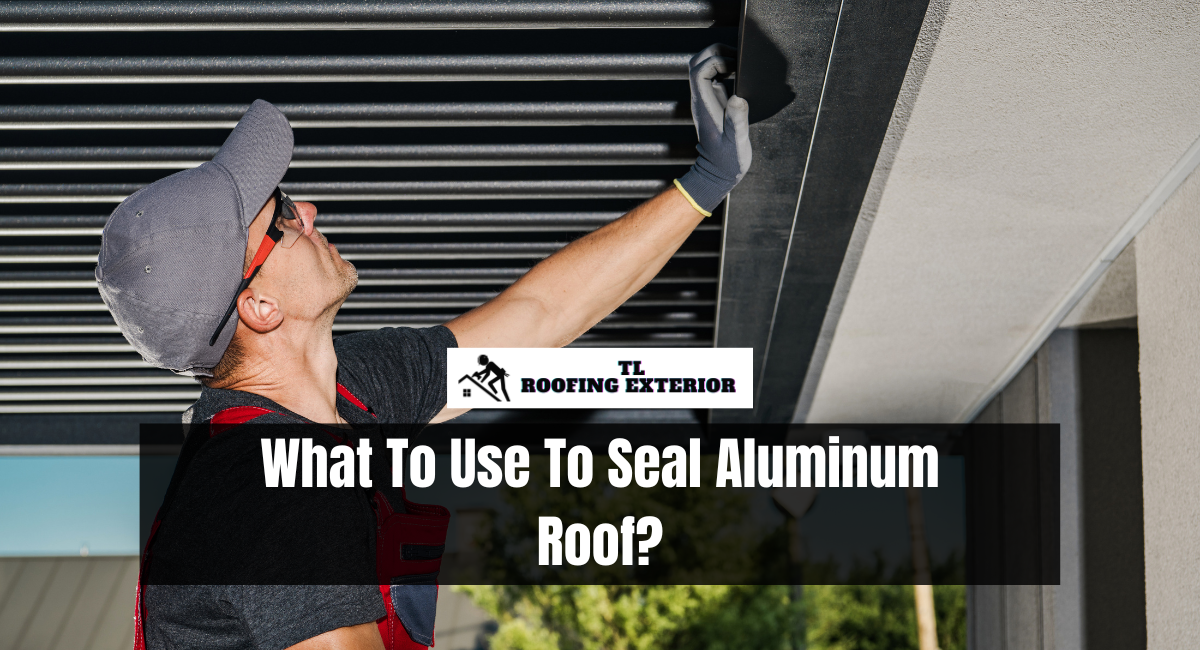Aluminum roofs are renowned for their durability and corrosion resistance, making them an excellent option for residential and commercial structures. To maintain their durability and weatherproofing properties, however, it is essential to encapsulate them effectively. The proper sealant can prevent water infiltration, reduce the possibility of leakage, and improve the overall performance of your aluminum roof. This article, will explain what to use to seal aluminium roof.
What To Use To Seal Aluminum Roof?
1. Polyurethane Sealant
Sealant made from polyurethane is renowned for its durability and adhesion properties. It effectively seals aluminum roof joints, seams, and other spaces.
It creates a flexible, watertight seal that can withstand fluctuations in temperature.
2. Silicone Sealant
Due to their UV rays and weathering resistance, silicone sealants are appropriate for outdoor use. They retain their flexibility and adhere well to aluminum.
Typically, these sealants seal roof penetrations, flashing, and any areas susceptible to movement or expansion.
3. Roof Coating
Aluminum roofs can be effectively sealed and protected by roof coatings. They provide a homogeneous, continuous membrane that aids in preventing water infiltration.
The selection of coating (acrylic, silicone, or polyurethane) is influenced by climate, desired durability, and cost.
4. Butyl Tape
Butyl rubber tape is a self-adhesive sealing tape with a reputation for having exceptional sealing properties.
It adheres well to aluminum surfaces, making it appropriate for sealing roof seams and overlaps. Butyl tape is user-friendly and provides a durable seal.
5. Metal Roof Sealant
Some compounds are formulated specifically for use on metal roofing materials, including aluminum.
Typically, these sealants have properties that make them compatible with the unique characteristics of metal roofs, such as expansion and contraction caused by changes in temperature.
6. Flashing Cement
Flashing cement is typically used to seal around roof penetrations like ducts, chimneys, and skylights.
It adheres securely to metal and roofing materials, preventing water intrusion.
7. Surface Preparation
Preparing surfaces properly is crucial. Ensure the aluminum roof is free of grime, debris, and rust before applying any sealant or coating. Some sealants might need a primer to improve adhesion.
8. Compatibility
Always ensure that the sealant or coating is compatible with aluminum. Using incompatible materials may result in poor adhesion or chemical reactions that cause roof damage.
9. Weather Resistance
Consider the weather in your region. Certain sealants and coatings are more adapted to particular weather conditions. For example, silicone sealants are ideal for UV-intensive environments.
10. Manufacturer’s Instructions
It is essential to observe the sealant or coating manufacturer’s instructions. This includes the application temperature range, curing period, and surface preparation procedures.
Following these guidelines guarantees a proper and durable seal.
11. Local Building Codes
Consult local building codes and regulations for specific roofing sealants and coatings requirements. The legality and quality of your roofing work depend on your adherence to these codes.
12. Professional Installation
Consider consulting a professional roofing contractor for complex projects or situations in which you are dubious of the best sealing method.
They know necessary to recommend the most appropriate products and ensure correct installation.
13. Maintenance
Regular roof inspections and maintenance are required to identify and address any sealant or coating issues that may arise over time.
Aluminum roofs can be made to last longer with timely restorations and re-coatings.
What Is The Waterproof Coating For Aluminium?
An elastomeric roof coating formulated for metal roofs is one option for effectively waterproofing aluminum surfaces. Elastomeric coatings aim to produce a seamless, watertight barrier that adheres well to aluminum.
Typically ductile, UV-resistant, and able to expand and contract in response to temperature fluctuations, these coatings are suitable for protecting and waterproofing aluminum roofs.
They are available in numerous varieties, including acrylic, silicone, and polyurethane elastomeric coatings, and their selection is influenced by climate, durability, and cost. Always adhere to the manufacturer’s application instructions.
What Is The Best Protection For Aluminum?
The optimal aluminum protection depends on the application. Due to its oxide layer, aluminum is inherently corrosion-resistant, but additional protection can be advantageous.
- Anodizing: For outdoor or industrial applications, anodizing aluminum creates a layer that is durable, corrosion-resistant, and improves its appearance.
- Paint or Coating: Add a high-quality varnish or protective coating to aluminum to protect it from exposure to the elements.
- Powder Coating: Powder coating is a long-lasting, decorative finish that provides corrosion resistance and is frequently used in architectural and automotive applications.
- Clear Coat: To preserve the aluminum’s natural appearance, clear coatings provide a barrier against oxidation.
- Regular Cleaning and Maintenance: Consistent Cleaning and Maintenance Aluminum products can have a longer lifespan with consistent cleaning and maintenance.
Choosing the proper sealant for your aluminum roof is essential to safeguard it from the elements and preserve its structural integrity. Before applying any sealant, the surface must be thoroughly cleaned, prepared, and free of residue and rust.
Whether you choose a silicone-based sealant, an elastomeric coating, or another product, adhere to the manufacturer’s application guidelines. Regular roof maintenance and resealing as needed will protect your investment and keep your aluminum roof in excellent condition for many years.
Read More: What Are The Problems With Metal Roofs?
